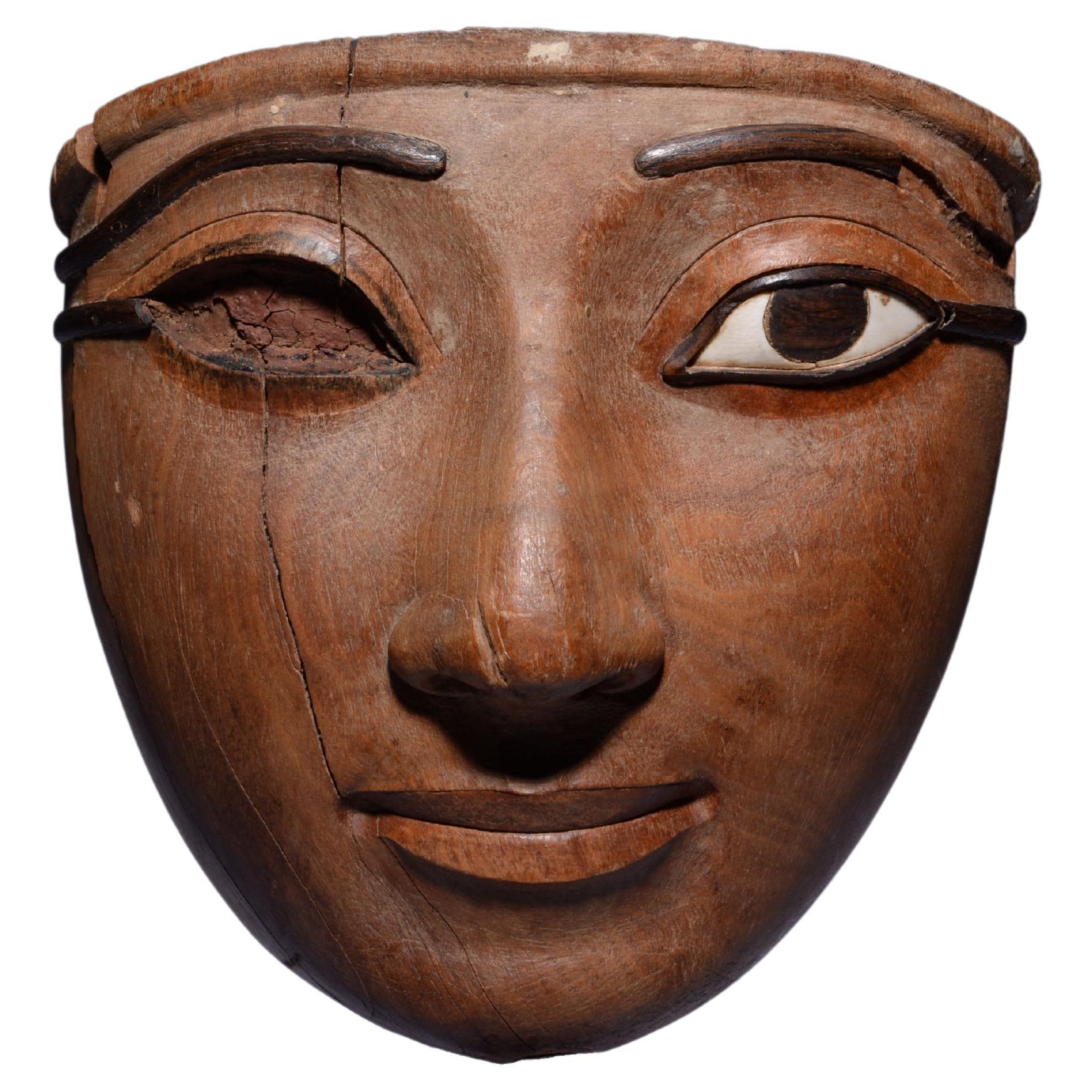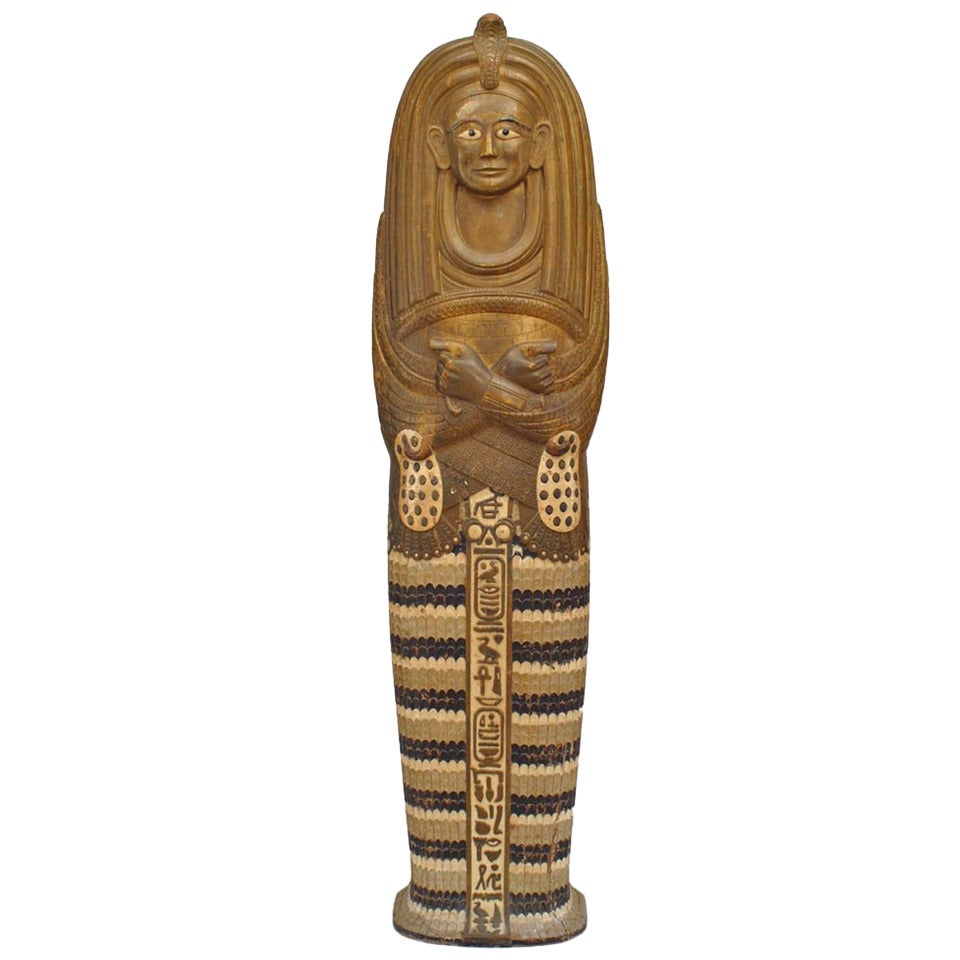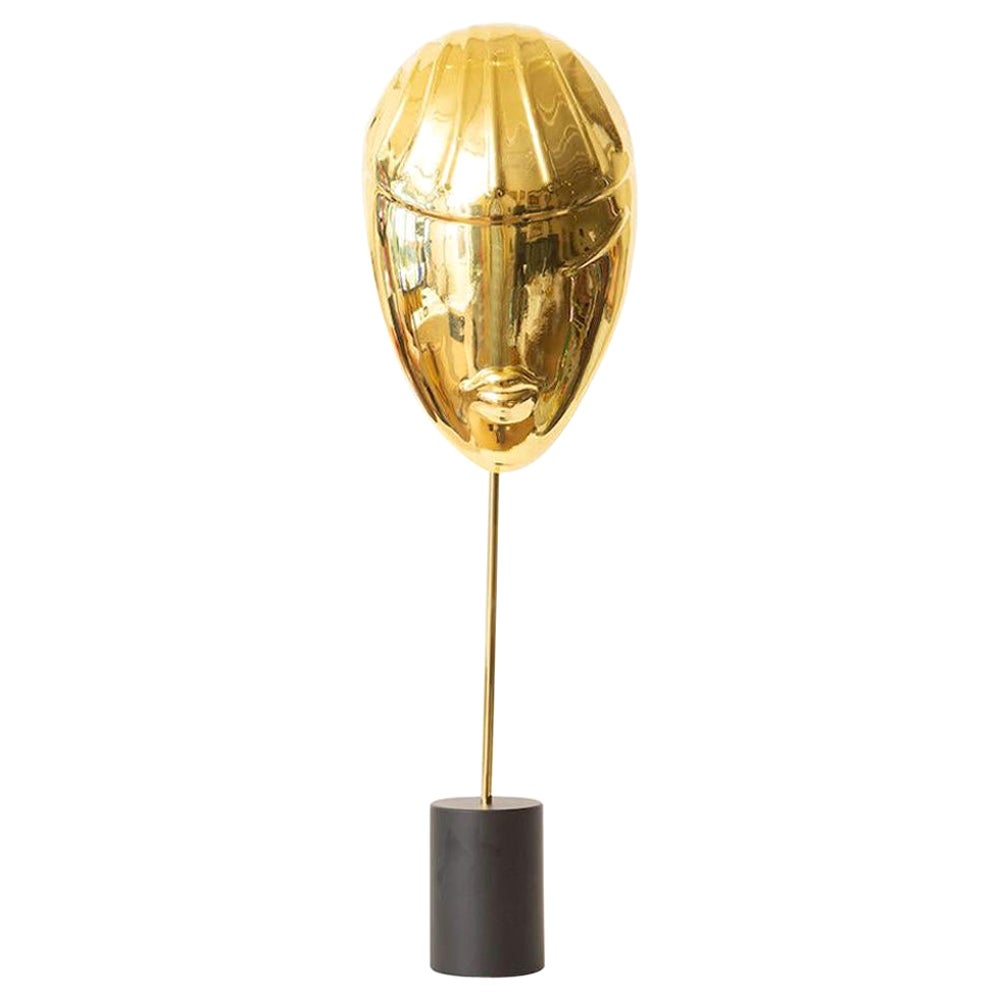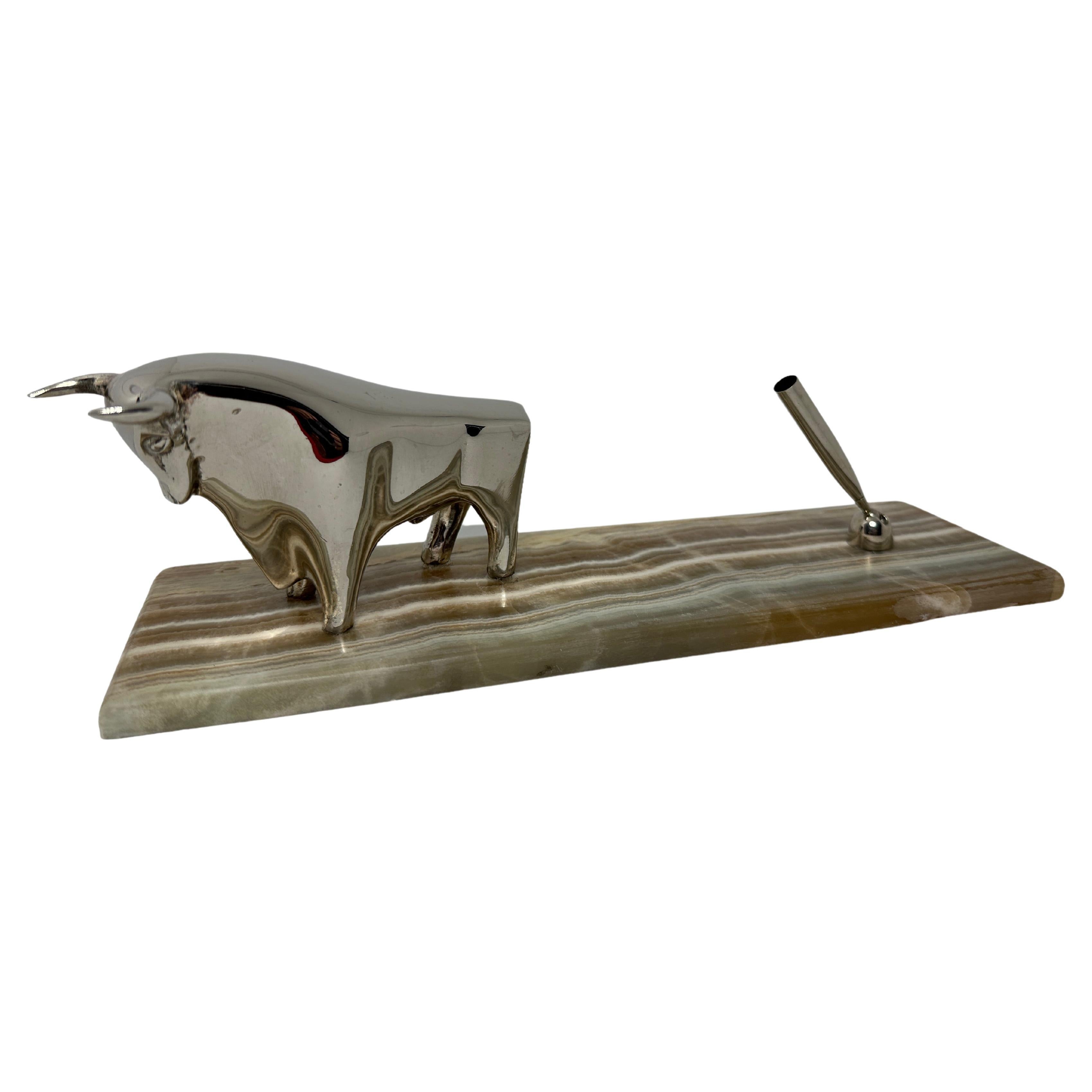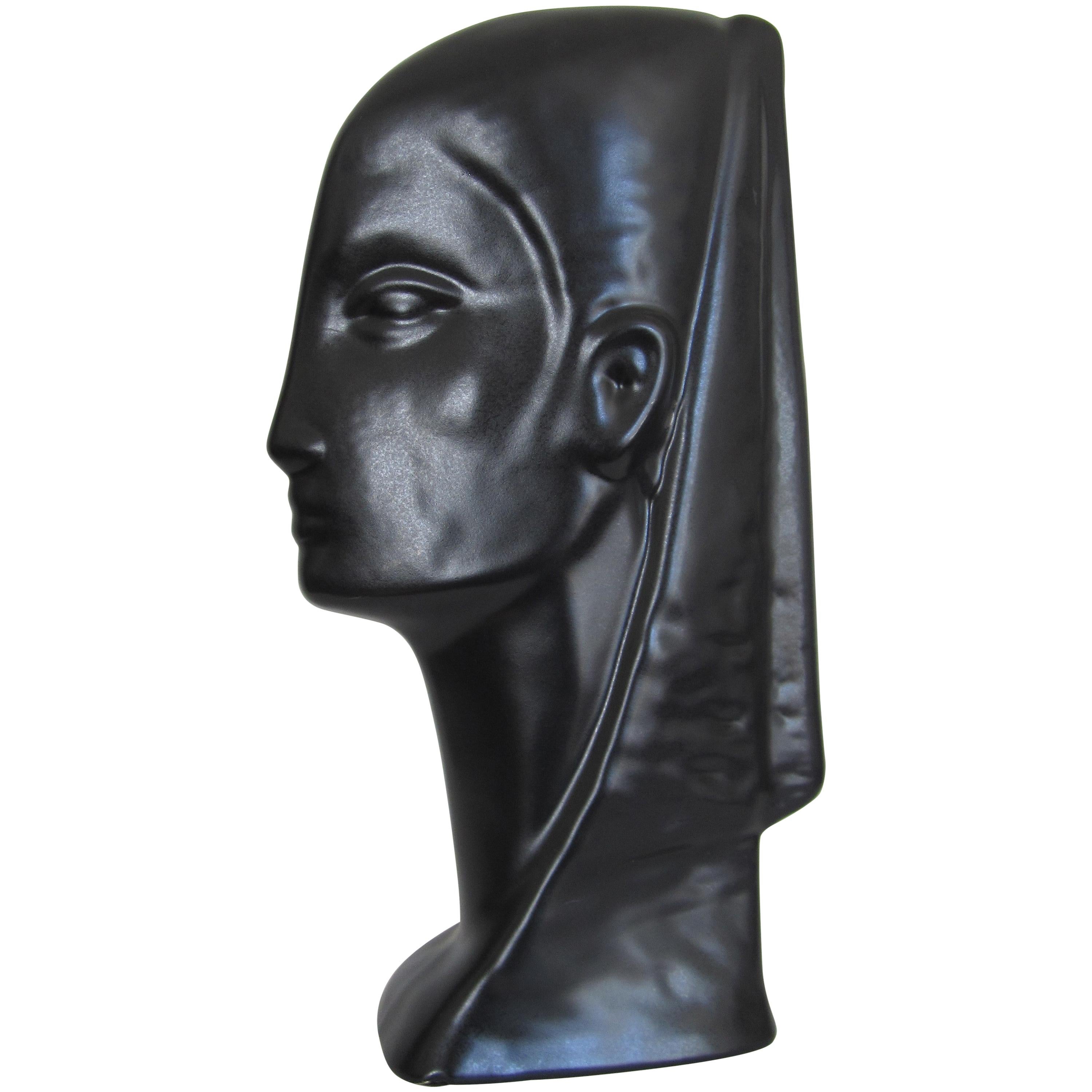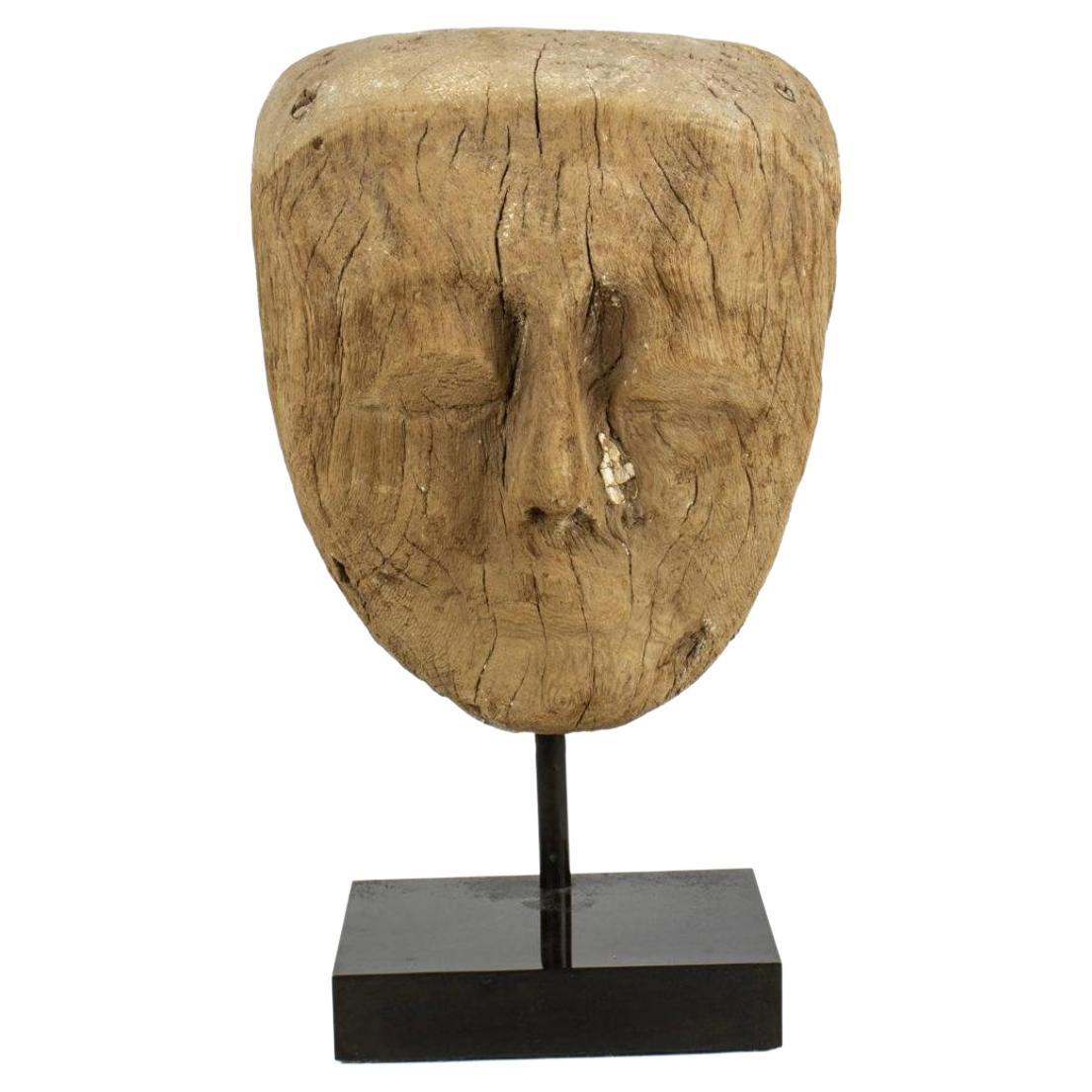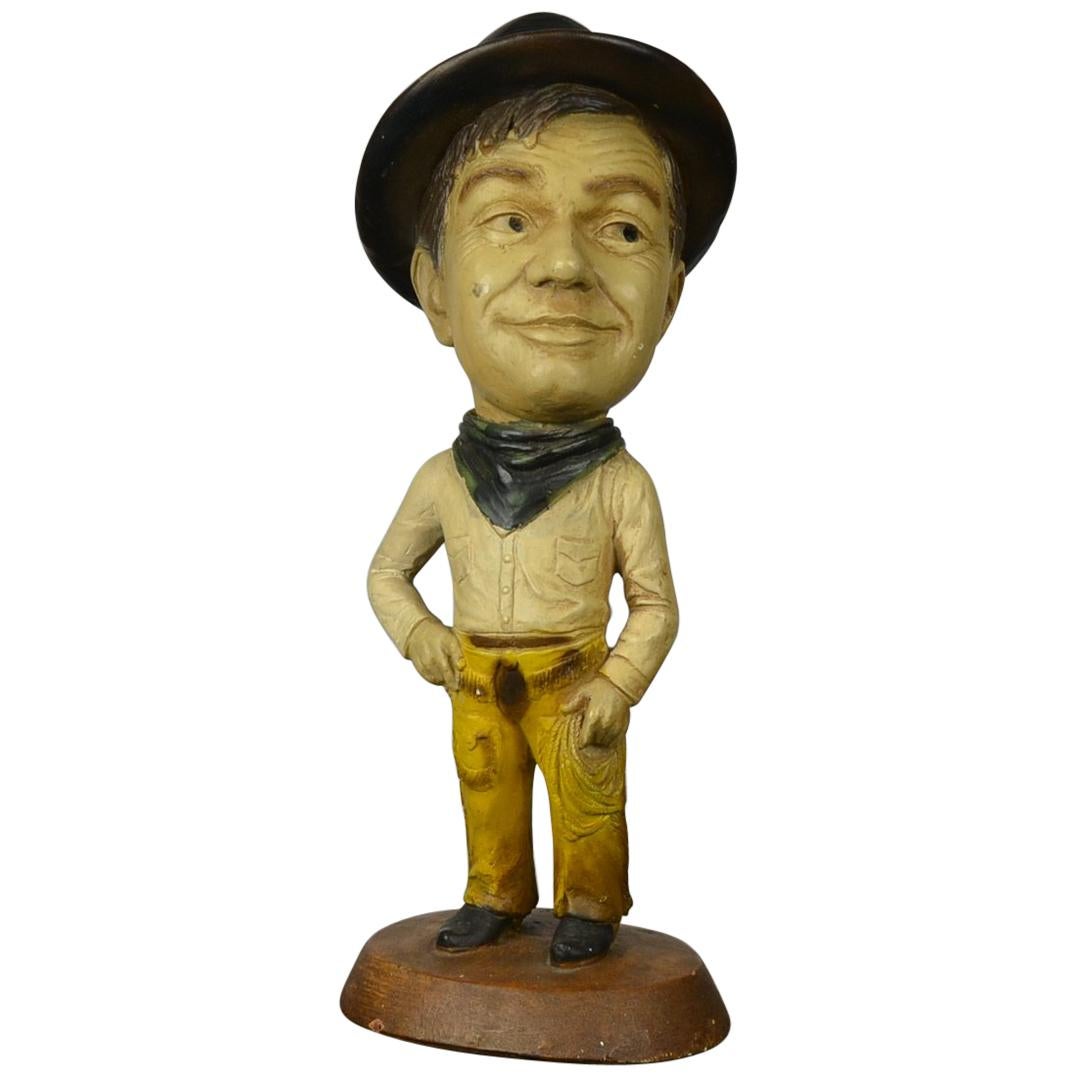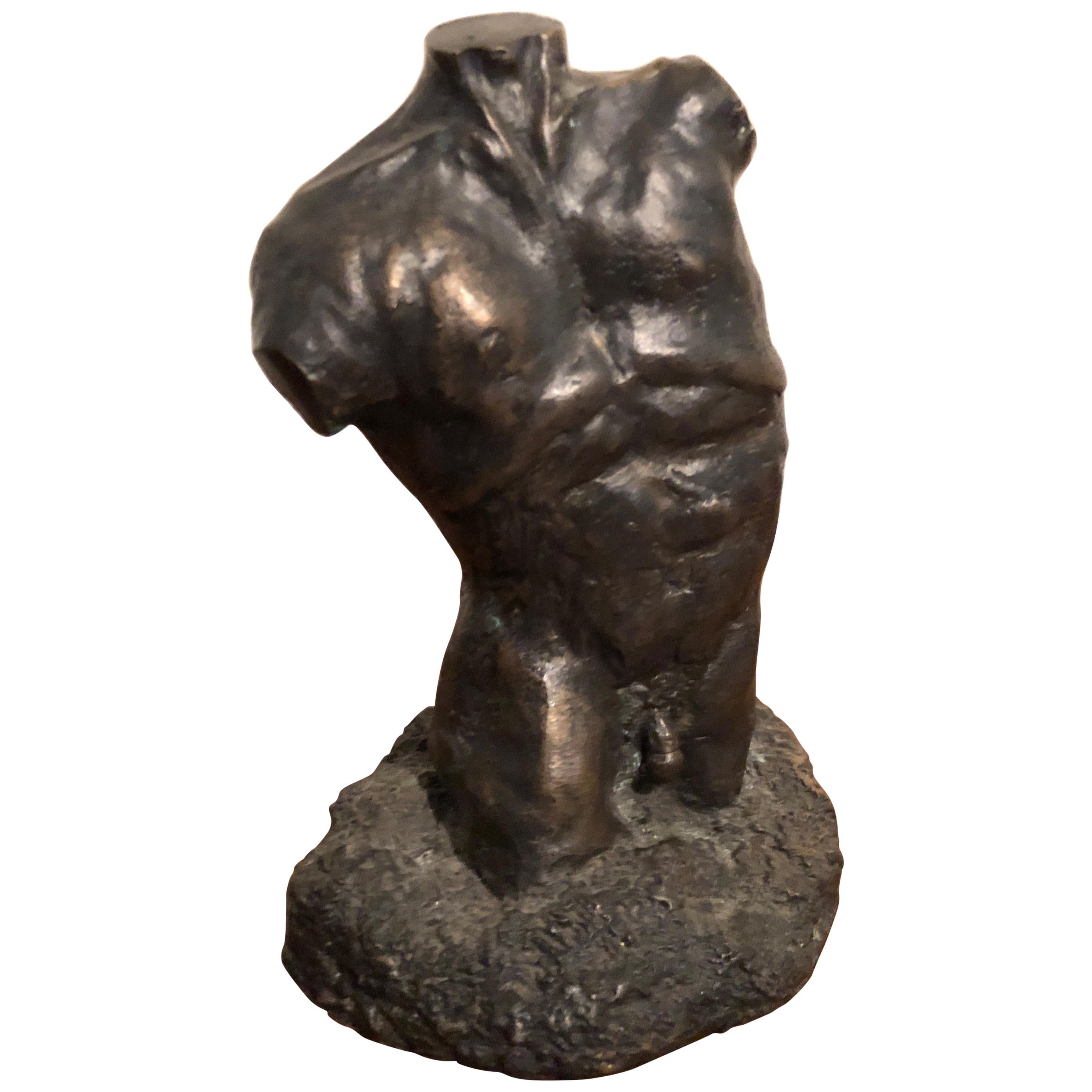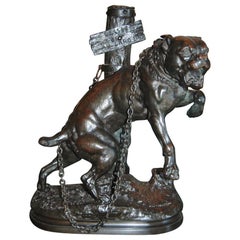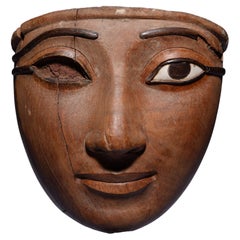
Egyptian Poly-Chrome Wood Mask 100-200 BC Garniture Sarcophagus Face Mask statue
View Similar Items
Want more images or videos?
Request additional images or videos from the seller
1 of 15
Egyptian Poly-Chrome Wood Mask 100-200 BC Garniture Sarcophagus Face Mask statue
About the Item
- Dimensions:Height: 11 in (27.94 cm)Width: 10 in (25.4 cm)Depth: 3 in (7.62 cm)
- Style:Egyptian (Of the Period)
- Materials and Techniques:
- Place of Origin:
- Period:
- Date of Manufacture:100-200 BC
- Condition:Wear consistent with age and use. it was mounted at some point as seen in the pictures.
- Seller Location:West Hollywood, CA
- Reference Number:1stDibs: LU4400213775072
About the Seller
5.0
Gold Seller
These expertly vetted sellers are highly rated and consistently exceed customer expectations.
Established in 1965
1stDibs seller since 2019
132 sales on 1stDibs
More From This SellerView All
- Bronze Sculpture Mastiff by Charles Valton Dog Bronze Statue Animalier AntiquesBy Charles ValtonLocated in West Hollywood, CABronze Sculpture Mastiff Charles Valton Dog Bronze statue animalier Antiques . Signed and stamped . Valton was known for his big cats but probably his most ...Category
Antique Late 19th Century French Animal Sculptures
MaterialsBronze
- Empire Style Malachite on a Bronze Doré Gilded Stand Desk Decorative Object LALocated in West Hollywood, CAA Beautiful Empire style malachite orb on a bronze doré stand retour d'Egypte of 3 figures of standing maidens with a pine cone in the center an detailed crown holder hosting a large...Category
Antique 19th Century French Empire Mounted Objects
MaterialsMalachite, Bronze
- Bronze Sculpture Lioness / Roger Godchaux Jewish Artist & Susse Lost Wax BibelotBy Roger GodchauxLocated in West Hollywood, CABronze Sculpture Lioness / Roger Godchaux Jewish Artist & Susse Lost Wax Bibelot . An important bronze sculpture By the great Jewish Bronze Master animalier , Estampille 1- Cire perdue Lost Wax Stamp "La Lionne" by Roger Godchaux. See Photo 2- 2- With A Stamp of Susse. See Photo 3- 3- the signature of the Artist on the bronze. See Photo Incredible Executed and very fine details with Dark Brown Patina with a hue of green . The movement of the lionesse is very graceful and sinuous (as most of the lion Sculpture he produced) Mounted on a black stone base 5 1/2" x 11 1/2" Antique Dealer West Hollywood CA Melrose Ave La Cienega Blvd. Godchaux Né à Vendôme le 21 décembre 1878 et mort le 6 mars 1958 à Paris. Roger Godchaux Sculpteur animalier regularly produces animal drawings and paintings. Thus, unlike his sculptures which mainly represent wild animals, especially elephants and felines that he was going to study at the Jardin des Plantes, his paintings are often inspired by farm animals that he could observe in a small village of Brie where lived the mother of his companion. He also paints commissioned portraits or portraits of his family or friends, such as Gaston Switzerland or René Huchet . But it is above all a sculptor. He made some works by direct carving of the wood. However, he mainly worked by modeling the earth. It treats surfaces by smoothing and oblique streaks. In this respect, unlike other animal sculptors like Édouard-Marcel Sandoz , François Pompon or Armand Petersen whose works are smooth, his work is close to the art of Paul Jouve which leaves apparent textures. The lioness is finished with Godchaux’s distinctive surface modeling where the flesh is left textured like a wax model on the artists bench, still being formed and tooled. Godchaux’s animal work is characterized by gentleness and a sensitivity towards his subjects that showcases their playfulness and personality. This is captured beautifully in the present example where her curiosity and intensity of focus are fully developed; the anatomical and muscular realism is noteworthy. The naturalistic base is signed in his standard script “Roger Godchaux” and is also signed “Susse Fres. Edit. Paris” with the Susse cachet; a tiny stamp “France” is impressed into the edge below the cachet. Models in mud are most often cast plaster. It is often in this material that he exhibits in Salons and galleries. The works for sale are cast in bronze. They are entrusted to famous founders like Susse , with whom he signs publishing contracts, or Valsuani . He also works with lesser known smelters like Gatti, Andro or Planquette. Some of his bronzes do not wear a cast iron seal. While there are some large models, most are modest in size, easily finding their place in collectors' homes. Some of his works are terracotta or sandstone. Models were published by Susse both in bronze and terracotta. Terracotta remains raw or is glazed. He also worked at the Sèvres factory in the late 1930s. Roger Godchaux , born in Vendôme on December 21 , 1878 and dead the March 6 , 1958in Paris , is a painter , draftsman and sculptor of animals French . If all domestic and wild bestiary is part of his artistic universe, it is the wild beasts and elephants that have been his favorite subjects. Figurative sculptor, he represents the animal without artifice, in his attitudes of everyday life. Roger Godchaux's father is an antique dealer. His mother, Jeanne Godchaux, is a concert pianist. He has a brother Yvan with whom he studies in Vendôme under the care of his maternal grandparents, music teachers in high school. Having joined Paris, he prepared in 1894 admission to the School of Fine Arts . He soon turned to animal art . He became a pupil of Jules Adler and Jean-Léon Gérôme . In 1896, he is a pupil of the Julian Academy . Great admirer of Antoine-Louis Barye , he will build a collection of works produced in the workshop of the master 1 . In 1905, he began to exhibit in Paris. He regularly participates in the Salon des artistes français . In 1914, he was mobilized in Saint-Lô . Reformed, he is assigned to the offices of the Ministry of War. During this period, he put his drawing skills at the service of propaganda for the Allies. After the war, he saw rue Descombes . He resumes the exhibitions at the Salon des artistes français where, in 1922, he won the bronze medal. The state orders two bronze plates for the Army Museum Library . In 1924, his second companion gives him a daughter, Luce. In 1925, the jury of the International Exhibition of Modern Decorative and Industrial Arts awarded him a silver medal. In 1927, he won the contest of car manufacturer Chenard and Walcker for the creation of an emblem for their cars. In February 1928, the State bought him a bronze sculpture: Elephant , exhibited at the National Salon of animal artists, of which he becomes the treasurer in November of the same year. It was at this time that the Newark Museum in the United States bought him works. It was also in 1928 that he won the silver medal at the Salon des artistes français. In 1929, the state bought him a sculpture ( Pigeon ) again. During the inter-war period, he exhibited regularly in various galleries: Galerie Charpentier , Galerie Georges Petit , Galerie Edgar Brandt , group of animals of the Malesherbes Art Gallery. He has friendly relations with other animals, including Henri Valette and Gaston Switzerland, with whom he regularly works at the Jardin des Plantes . In 1937, he signed a contract with the Manufacture Nationale de Sèvres for the edition of terracotta. During the Second World War , he stayed in Paris and continued to work in his studio on Boileau Street , but was forced to wear the yellow star . He lives with his girlfriend and daughter Avenue de La Motte...Category
Early 20th Century French Animal Sculptures
MaterialsStone, Bronze
- Hand Carved Stone Possible malachite Paperweight office Desk Sculpture objectLocated in West Hollywood, CAHand Carved Stone Possible malachite Paperweight office Desk Sculpture object A nicely hand carved Hardstone paperweight sculpture frog object decorative ...Category
Antique 19th Century European Paperweights
MaterialsStone
- Hand Carved Stone Paperweight Sculpture Object Decorative Antique Gift Idea LALocated in West Hollywood, CAA nicely hand carved stone paperweight sculpture of a frog object decorative antique gift animalier As a special gift item object to add a touch of elegan...Category
Antique 19th Century European Paperweights
MaterialsStone
- 19th C. Pair Faience of Rouen Summer & Winter Garniture Bust Sculpture statue LALocated in West Hollywood, CA----------one week sale , Ends Monday ------ will not be extended A beautiful pair of 19th century Faience of Rouen Depicting Summer and Winter. This piece, commissioned in the mid ...Category
Antique 19th Century French Busts
MaterialsFaience, Paint
You May Also Like
- Exceptional Egyptian Sarcophagus MaskLocated in London, GBExceptionally Fine Wooden Sarcophagus Mask Third Intermediate Period, 21st Dynasty, circa 1069-945 BC. Acacia wood, rosewood, hippopotamus ivory Masterfully carved from a single piece of fine-grained hardwood, the present mask is characteristic of the most exquisite funerary art made during the 21st Dynasty, and was probably commissioned for a particularly high-ranking individual. The oval face displays a gently smiling mouth with full, outlined lips, furrows at the corners and a bow-shaped philtrum. The straight nose with rounded nostrils, the cheeks full and fleshy and the large, almond shaped eyes with heavy lids and tapering cosmetic lines, set below long, sweeping eyebrows. Social collapse across the Mediterranean in the Late Bronze Age meant that the 21st Dynasty in Egypt was a period of great turmoil. Trade routes were disrupted, governments collapsed, and mass migration occurred. Economic scarcity meant that traditional funerary practices in Egypt were also affected, with a lack of material and financial resources leading to the reuse of preexisting material. As a result, during the 21st Dynasty, 19th and 20th Dynasty coffins changed ownership rapidly and were heavily recycled for new purposes. Tombs were also unmarked allowing them to be shared by many people. These new practices brought forth a shift in the understanding of funerary paraphernalia. No longer important objects owned forever by the deceased, they were now simply seen as short-term transformative devices, whose symbolic and ritualistic meaning could be appropriated for others. However, paradoxically, the art of coffin-making also reached new heights during this period, and many of the richly dec- orated “yellow” coffins, characteristic of the 21st Dynasty, are remarkable works of art in their own right. Indeed, knowing that coffins were being reused throughout Egypt, the Egyptian élite set themself apart by commissioning lavish sarcophagi decorated with the images and texts meant to help guide them to the afterlife, and which would otherwise have adorned the tomb walls. As coffins were the chief funerary element which now identified the dead and allowed them a physical presence in the world of the living, their quality and appearance were of the utmost importance. The traditional coffin ensemble was made of three parts: a wooden mummy cover, which laid directly atop the mummy, an inner coffin, and an outer coffin, both made of a lid and case. Additional decorative elements, such as masks, were carved out separately and later glued or pegged to the lids. After the completion of the painted decoration, the sarcophagus was covered in a varnish to give it its yellow colour. Gilding was sometimes used for the coffins of the high priests’ families, notably on parts representing naked skin, such as the face mask. However, some of the élite tactically avoided gilding altogether as to ensure that their coffin would not be looted. When manufacturing the inner and outer coffins, particular attention was paid to the woodwork. Displaying the skill of the carpenter, this type of funerary art has largely remained unparalleled throughout Egyptian history. The principal wood used to craft the present mask is Acacia nilotica. The evergreen Egyptian acacia was considered sacred and said to be the tree of life, the birthplace of the god Horus, as well as symbolic of Osiris, the god of the dead and resurrection. The modelling of the face in the wood is superb, but the inlays also help mark this mask out as exceptional. Inlaid eyes and eyebrows were extremely rare and reserved to the finest and most expensive coffins. Traditionally, eyes were made of calcite, obsidian, or quartz, and eyebrows of coloured glass paste or bronze. Here, the pupils, eyebrows, and cosmetic lines are inlaid with Dalbergia melanoxylon, a rare type of wood which belongs to the rosewood genus. In antiquity, however, it was known as Ebony of the Pharaohs, from the Egyptian word “hbny”, meaning dark timber, because of its black, lustrous appearance. An extremely dense and hard wood requiring significant skill to work with, ebony was a luxury material highly coveted by the pharaohs themselves, to make furniture, decorative and funerary objects. The wood was imported with great effort from the southern Land of Punt, most likely modern Sudan, Ethiopia, Djibouti, and Eritrea, alongside other luxury goods such as gold and ivory. A magnificent ebony throne, recovered in the tomb of King Tutankhamun, illustrates the incredible aesthetic potential of this material and why it was so highly valued by Egyptian royalty. Only élite members of Egyptian society could have afford- ed Ebony of the Pharaoh inlays for their funerary mask. The sclerae on the present piece were once both inlaid with hippopotamus ivory. Whiter than elephant ivory, this type of ivory is also denser, and more difficult to carve. The use of this luxury material, reputed for its gleaming appearance, enhances the lifelikeness of the eyes. For the Egyptians, hippopotamus ivory was imbued with magic powers. The hippopotamus was indeed both feared and venerated due to its aggressive behaviour. Whilst the male hippopotamus was associated with danger and chaos, the female was benevolent and invoked for protection, especially of the house and of mothers and their children, through the hippopotamus goddess Tawaret. Thus, not only was hippopotamus ivory used as an inlay and to make practical objects, such as combs and clappers, but it was also used to make talismans like apotropaic wands or knives. Made during a time of scarcity where few could afford made-to-order coffins, the present mask could have only belonged to one of the highest-ranking individuals in society. Undoubtedly one of the finest Egyptian coffin...Category
Antique 15th Century and Earlier Egyptian Egyptian Figurative Sculptures
MaterialsFruitwood, Hardwood
- Egyptian Carved Sarcophagus FigureLocated in New York, NYEgyptian carved and painted life size sarcophagus figure (19/20th Cent)Category
Antique 19th Century Unknown Egyptian Sculptures
MaterialsWood, Paint
- Brass Face Mask Sculpture Hagenauer Style Black Stand VintageBy BalosLocated in North Miami, FLThis arresting vintage tall polished brass face sculpture has innuendos of partial tribal design meets Hagenauer meets modern. It is from the 70's...Category
Vintage 1970s American Modern Figurative Sculptures
MaterialsBrass, Iron
- Chrome Bull and Pen Holder Statue Decorative Desk Accessory, Italy 1970sLocated in Nuernberg, DEClassic 20th century Bull statue on a marble base with a pen holder. Desktop accessory, made of metal, chrome and marble. Nice addition to your wri...Category
Vintage 1970s Italian Mid-Century Modern Animal Sculptures
MaterialsMarble, Metal, Chrome
$336 Sale Price20% Off - Mid-20th Century Painted Wood Face Sculpture 1950s Signed L.NBy Louise NevelsonLocated in Buenos Aires, OlivosMid-20th century wooden face sculpture 1950s. Signed L.N. 1951 Painted wood sculpture, signed and dated on left side. Supported on an acrylic base.Category
Mid-20th Century American Mid-Century Modern Abstract Sculptures
MaterialsWood
$699 Sale Price68% Off - Female Face Bust SculptureLocated in New York, NYA striking vintage black ceramic pottery female face bust sculpture, circa 20th century. A great piece for a column pedestal as shown, shelf, mantle, cocktai...Category
Mid-20th Century Egyptian Revival Figurative Sculptures
MaterialsCeramic, Pottery
$1,200
Recently Viewed
View AllMore Ways To Browse
Windsor Jewels
The Jewels Of The Duchess Of Windsor
Space Themed Dress
Chrome Queen
Paris Discovering Period Interiors
Antique Furniture Santa Barbara
Antique French Wood Statues
Mask Lady
Chrome Lady
Opera Mask
Antique Mission Lighting
Angels Egypt
Antique Wood Fire Surrounds
Antique Wood Fire Surround
Antique Hawaiian Art
Mask Sculpture European
Elsie De Wolfe
Barbara Wood Artist
